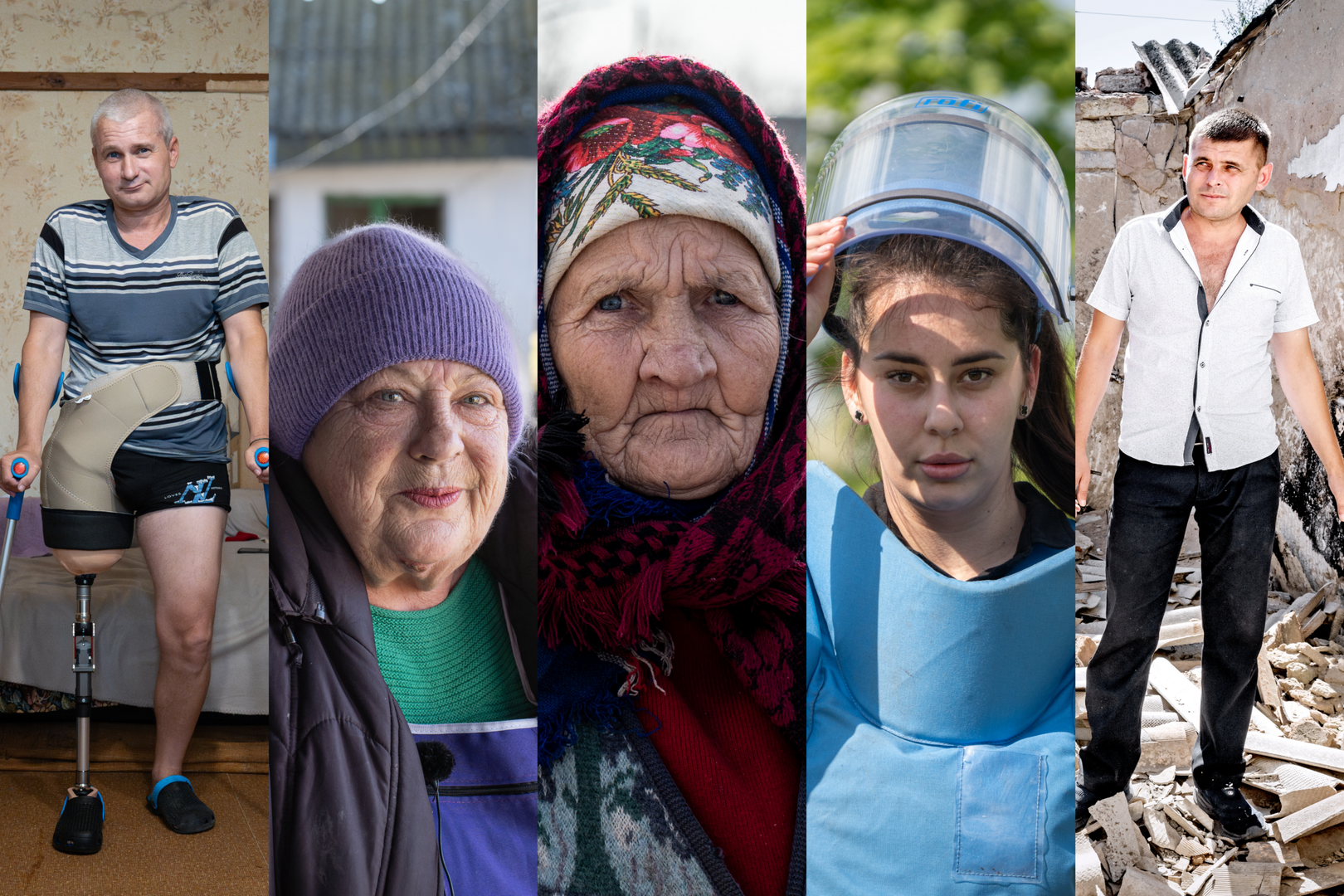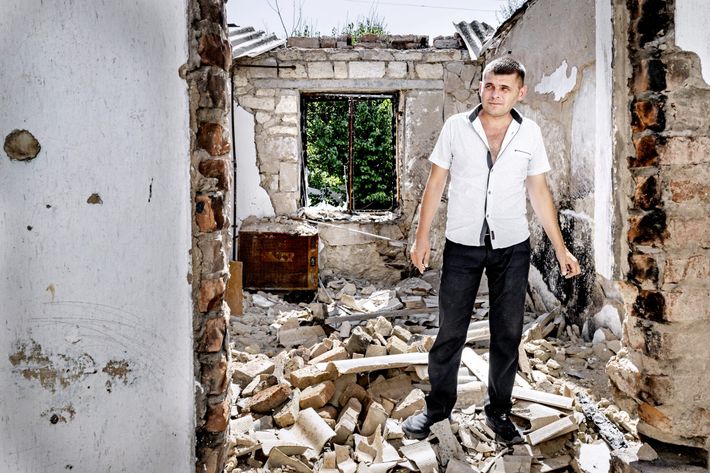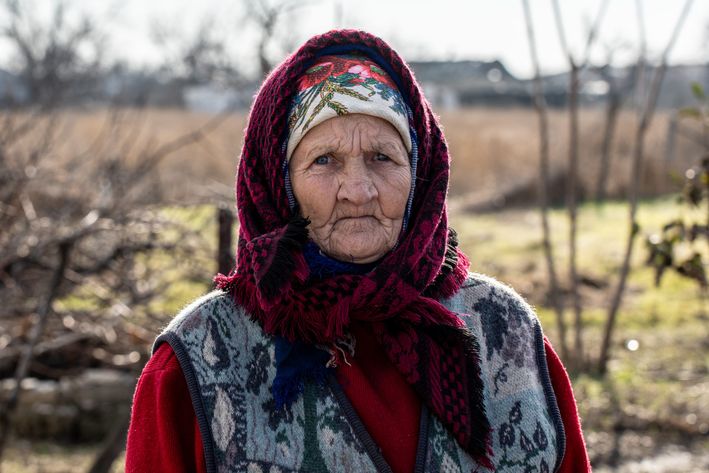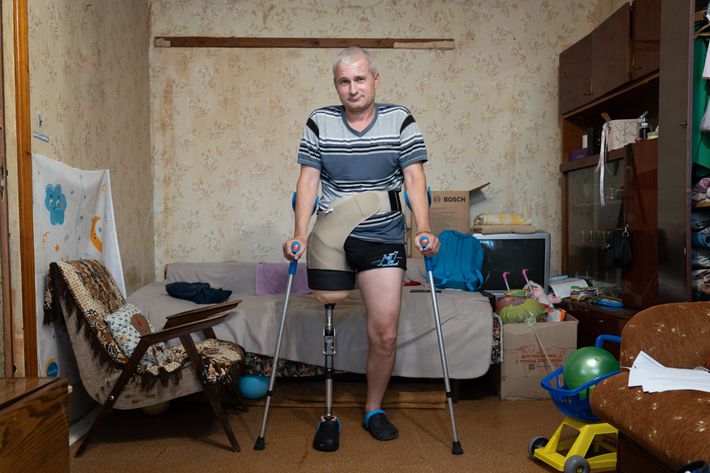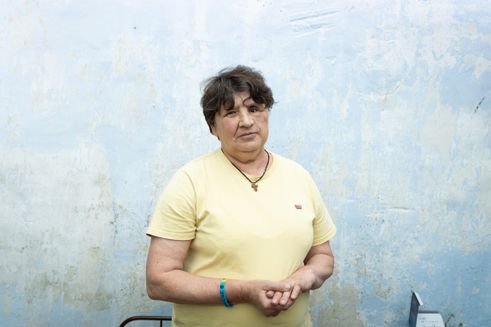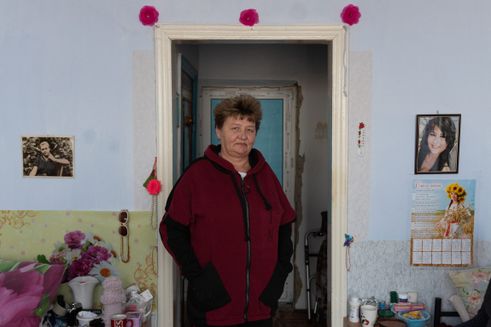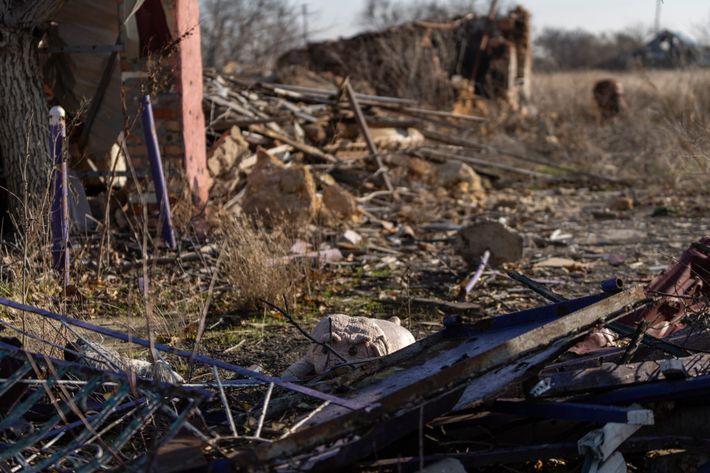Over the course of a year, European Union (EU) support for DCA/NCA has helped 100,000 people in Mykolaiv and Kherson. Humanitarian mine action teams have surveyed and cleared vital agricultural lands and legal aid has given people access to rebuild their lives.
In the village of Myrne, located between Mykolaiv and Kherson oblasts, explosive remnants of war (ERW) were plentiful, posing a real threat to its inhabitants. For some like 44-year-old Andrii, the hazard of ERW wasn’t the only problem. His house was entirely destroyed during the heavy fighting between Russian and Ukrainian forces in 2022.
All the documentation Andrii had for ownership of his house was destroyed when the house itself was destroyed. He has received legal aid from DCA/NCA’s partner organization Right to Protection in order to prove ownership of the house – which is necessary if he is to receive financial support to rebuild it.
Andrii’s story is one among many in Mykolaiv and Kherson, and it highlights the complex needs of the war-affected population. By integrating humanitarian mine action and legal aid, DCA/NCA has been able to address the needs of people, who are desperate to rebuild their lives in former frontline areas. In the first year of EU support, DCA/NCA through Right to Protection has supported 665 people.
To Receive Help, You Need Documents
Across the street from Andrii’s destroyed house, lives 84-year-old Yevheniia, who too is receiving support from Right to Protection.
“My house was hit by bombs five times during the fighting,” says Yevheniia, who lost all of her personal documents and proof of ownership of her house during the shelling.
Getting compensation would have been practically impossible for Yevheniia if she had not received the legal aid to re-establish her documents.
Her story is similar to that of 59-year-old Halyna, who lives in the neighbouring village of Zoria. Halyna’s house has holes in the roof and a destroyed interior.
Watch Halyna tell her story here:
For some people, like Maksym in Mykolaiv, the legal aid has had a very tangible impact. The legal aid helped Maksym navigate the bureaucratic complexities of getting a prosthetic leg. With the new leg, he is able move around freely in his city and play with his daughter.
“It took me eight months to get a prosthetic leg from the government, but it would never have happened without legal assistance. Understanding and working with the bureaucracy with a war injury is an impossible process. Everything must be done in a specific way. I had to travel all over the city and the region to complete paperwork while recovering. I could not have managed it alone,” Maksym explains.
Mine action in Mykolaiv and Kherson
While people are getting legal aid to rebuild their lives, teams of DCA/NCA deminers are working to make the ground nearby their villages safe again from explosive ordnance. This is done by clearing lands from hazards, surveying areas for risks, and educating people on the dangers of explosive ordnance
“There is a significant risk for people living near former battlefields. They don’t necessarily have the proper education on how to behave and, most importantly, what not to do around the remnants from the war. Therefore, it is essential for DCA/NCA to not just survey and clear areas of unexploded ordnance, but to educate the people on how to stay safe in areas littered with explosives,” says Michael, DCA/NCA Ukraine’s Operational Manager for Humanitarian Mine Action in Ukraine.











Non-technical survey (NTS) teams also play a crucial role by identifying hazardous areas, often through interviews with local residents and by analyzing patterns of previous conflict activity. These teams are key to ensuring safe returns for displaced families and enabling farmers to reclaim their livelihoods. Since August 2024, NTS teams have begun operating in Kherson Oblast, where the need is particularly severe.
Ukraine is one of the most heavily mine- and explosive ordnance-contaminated countries in the world. In 2022, Ukraine had the second highest number of people killed and injured by mines and unexploded ordnance, second only to Syria, according to OHCHR.
Training Deminers in Mykolaiv
Before putting teams in the field, DCA/NCA is training staff to become deminers. In addition to being trained to handle NTS, clearance, or EORE tasks, all deminers must complete a comprehensive Basic Life-Saving course. The teams are trained in first aid and demining protocols, after which they are ready begin working on making Mykolaiv and Kherson more secure.
Other than being trained as deminers to handle NTS, clearance, or EORE-tasks, all trained deminers have to complete a comprehensive Basic Life Saving course. Over five days, all the future deminers participate in an in-depth first aid training carried out by DCA/NCA medical staff.
“The knowledge and skills are critical for them to have. Unfortunately, it can get ugly out there. All these skills are also applicable in their private lives should they ever be involved in a car accident or other life-threatening situations. These skills will stay with them for life,” says Gerhard Pretorius, medical coordinator at DCA Ukraine.
The comprehensive EU-funded project has supported 100,000 people in its first year, but will continue until the summer 2025. For many of the people supported by the project, they express a revitalized hope even if there is a long way to complete recovery. Among them is 53-year-old Halyna from Kherson, who is internally displaced and now living in Mykolaiv.
“I would really love to return to my home. But it is completely destroyed. I miss my old life, my friends, my family and my home so much. But just getting my passport back, has given me renewed hope,” says Halyna.

